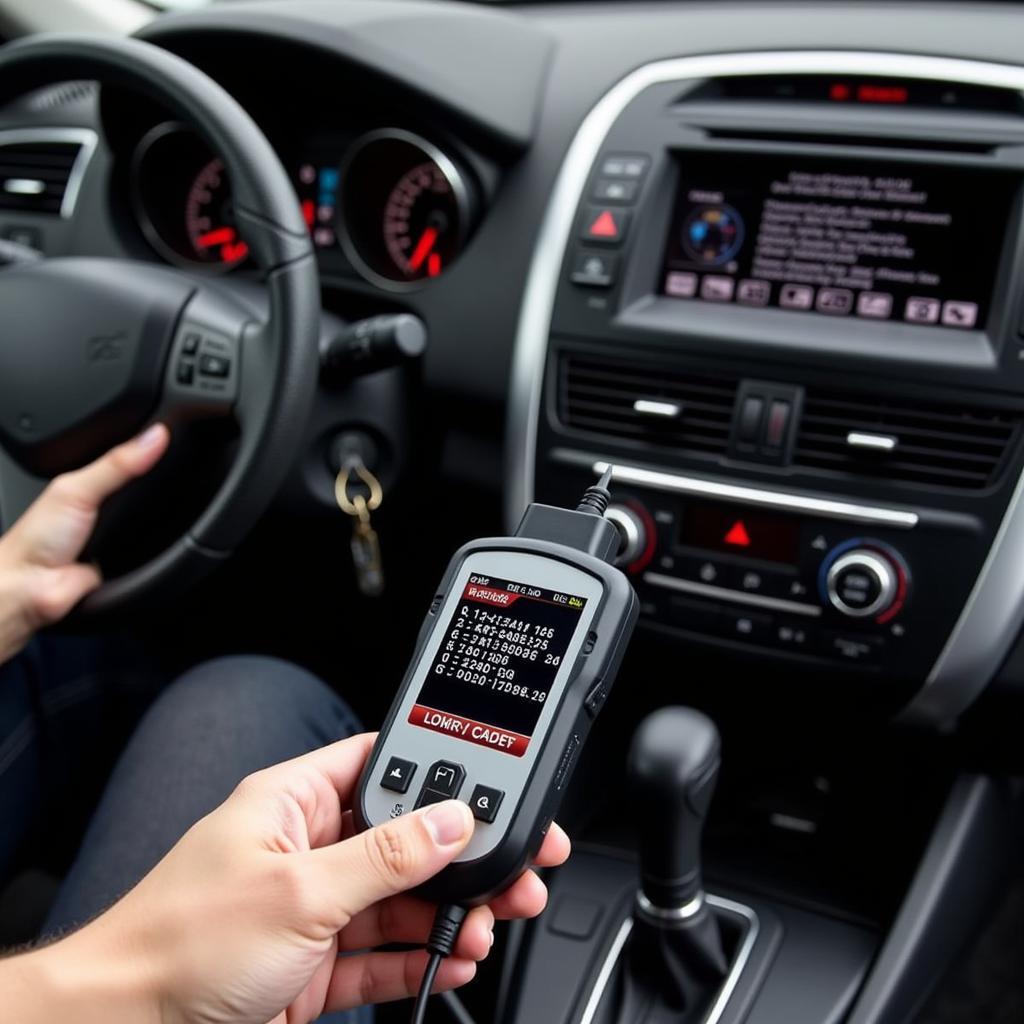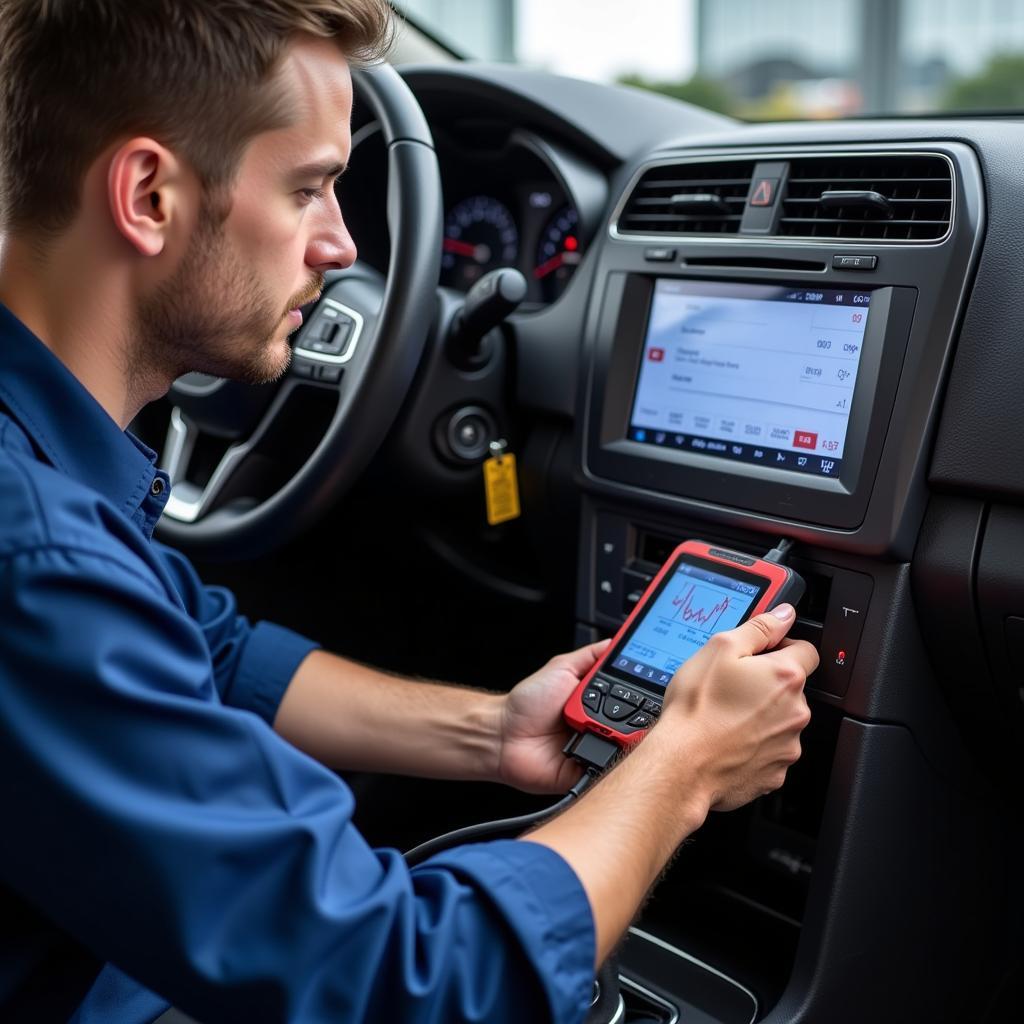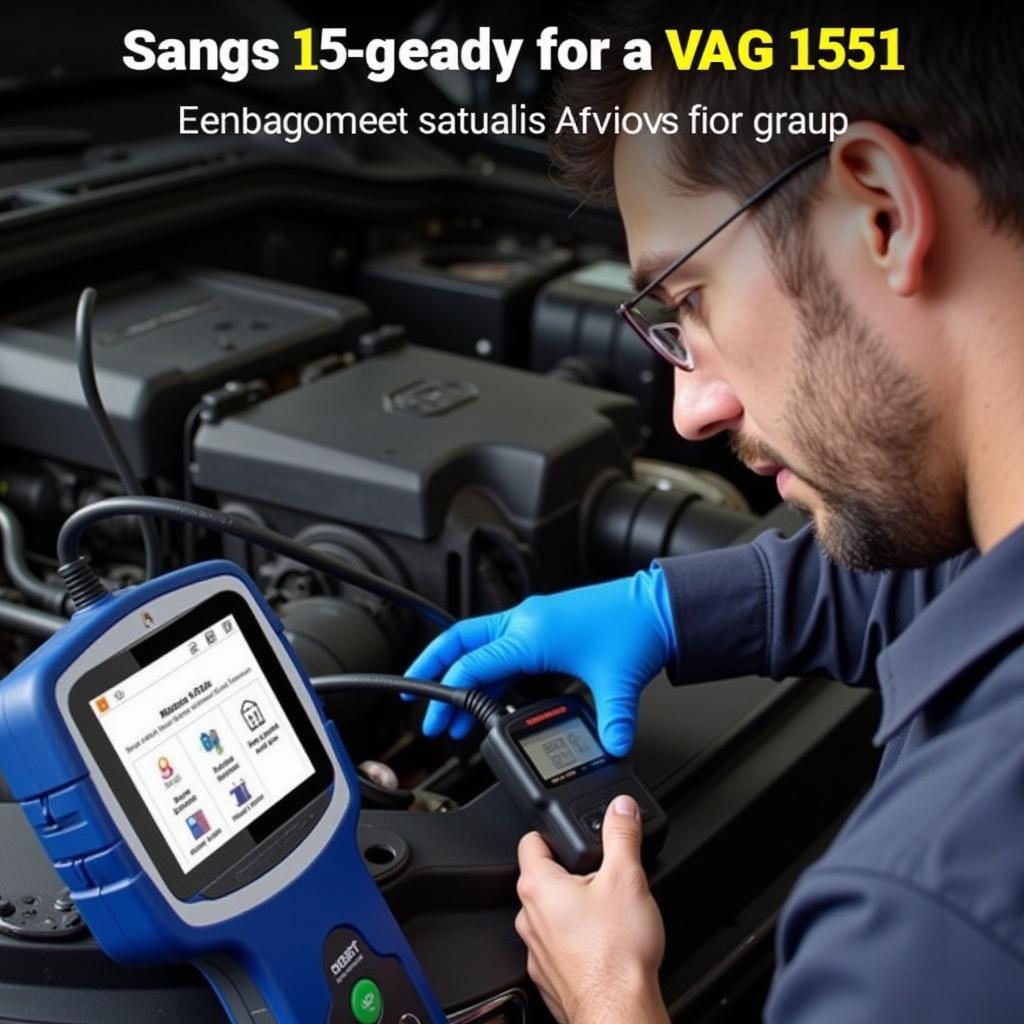Automotive diagnostics have evolved significantly, moving from rudimentary guesswork to sophisticated computer-aided analysis. Central to this revolution is the scan tool, a device that bridges the gap between the complex electronic systems of a vehicle and the technician or car owner seeking to understand its inner workings. This article delves into the world of scan tools, providing a comprehensive description of these essential diagnostic tools. Understanding how these tools function and the information they provide can empower car owners and technicians alike to make informed decisions about vehicle maintenance and repair. You can find helpful resources like veepeak obd reader scan tool online to further enhance your understanding.
What is a Scan Tool and Why is it Important?
Modern vehicles are intricate networks of electronic control units (ECUs) that manage everything from engine performance and transmission shifting to safety features and climate control. When a problem arises, these ECUs store diagnostic trouble codes (DTCs) – the digital fingerprints of malfunctions. A scan tool, also known as a code reader or OBD scanner, is the key to unlocking these codes. It’s the primary interface for retrieving, interpreting, and sometimes even clearing these DTCs, giving invaluable insights into the vehicle’s health.
Having access to a scan tool can save you both time and money. Instead of playing the guessing game with potential issues, a scan tool provides a direct line to the source of the problem. This allows for faster, more accurate diagnoses, eliminating unnecessary repairs and preventing further damage to the vehicle.
 OBD Scanner Connected to Car
OBD Scanner Connected to Car
Different Types of Scan Tools: From Basic to Professional
Scan tools range from simple code readers available for under $20 to sophisticated professional-grade diagnostic platforms costing thousands of dollars. Choosing the right tool depends on your needs and technical proficiency.
Basic Code Readers:
These entry-level devices retrieve basic DTCs. They are ideal for car owners wanting a quick overview of potential issues. However, they typically don’t provide access to advanced functionalities like live data streaming or bi-directional control.
Mid-Range Scan Tools:
These offer more features than basic code readers, including the ability to view live data from various sensors, access manufacturer-specific codes, and perform some reset functions. These tools are a good choice for DIY enthusiasts and small workshops.
Professional-Grade Scan Tools:
These are the powerhouses of automotive diagnostics. They provide comprehensive functionality, including access to all system modules, advanced coding and programming capabilities, bi-directional control over actuators, and comprehensive diagnostic software. These are indispensable for professional mechanics and larger repair facilities. You can find information about various car fault scanner software car fault scanner software online to get a better idea of the options available.
How to Use a Scan Tool: A Step-by-Step Guide
Using a scan tool is generally a straightforward process, although the specific steps may vary slightly depending on the make and model of the tool. Here’s a general guide:
- Locate the OBD-II Port: This port is typically located under the dashboard, near the steering wheel.
- Connect the Scan Tool: Plug the scan tool’s connector into the OBD-II port.
- Turn on the Ignition: Turn the ignition key to the “on” position, but don’t start the engine.
- Power on the Scan Tool: Turn on the scan tool and follow the on-screen prompts.
- Read Codes: Select the option to read diagnostic trouble codes.
- Interpret Codes: Research the retrieved codes to understand their meaning.
- Clear Codes: After addressing the underlying issue, use the scan tool to clear the codes.
Beyond the Basics: Advanced Scan Tool Functionality
Beyond retrieving and clearing DTCs, some scan tools offer advanced functionality:
- Live Data Streaming: View real-time data from various sensors, providing valuable insights into system performance.
- Bi-directional Control: Activate components like fuel injectors or solenoids to test their functionality.
- Coding and Programming: Perform advanced functions like key programming and module coding.
“Understanding the data your scan tool provides is just as crucial as having the tool itself. It’s the combination of technology and knowledge that truly empowers you to diagnose and repair automotive issues effectively.” – John Davis, Senior Automotive Diagnostic Technician
Choosing the Right Scan Tool: A Guide for Every User
Choosing the right scan tool involves considering several factors, including your budget, technical skills, and diagnostic needs. Are you a car owner wanting to monitor your vehicle’s health? A basic code reader or an obd scan tool app might suffice. Are you a professional mechanic needing advanced diagnostics and programming capabilities? A high-end professional scan tool is a necessary investment. You may also be interested in resources such as how to use a how to use bluedriver scan tool. Researching different models and features is crucial to making an informed decision. For specific needs, like working on heavy-duty vehicles, a bosch truck scan tool might be more suitable.
Conclusion: Empowering Automotive Diagnostics with Scan Tools
The scan tool is a crucial piece of equipment for anyone involved in automotive diagnostics, from the weekend DIYer to the seasoned professional. Understanding the tool used to perform the scan is essential for accurate and efficient vehicle maintenance and repair. By leveraging the power of these diagnostic tools, car owners and technicians alike can demystify the complexities of modern vehicles and ensure optimal performance and reliability.
If you require further assistance or would like to learn more about our scan tool offerings, please don’t hesitate to connect with us. Contact ScanToolUS at +1 (641) 206-8880 or visit our office at 1615 S Laramie Ave, Cicero, IL 60804, USA.


